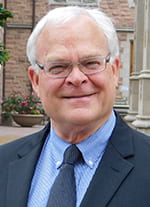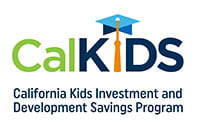The state enrolls 3.4 million children in CalKIDs, which CSD experts helped to shape.
Today Governor Gavin Newsom publicly launched CalKIDS, the California Kids Investment and Development Savings program. With 3.4 million children in the first cohort of enrollees and more than $1.8 billion in assets, CalKIDS leaves the starting gate as the nation’s largest Child Development Account (CDA) policy.
CalKIDS began enrolling newborns and eligible public-school students in July during its soft-launch period. The enrollment, account opening, and initial deposit occur automatically, with no initial involvement required from the child or family, though they are encouraged to register via an online portal. The ScholarShare Investment Board, chaired by the state treasurer, oversees the assets, which are earmarked for higher education.

“The scope itself is impressive, but the universal infrastructure in CalKIDS is more important,” said Michael Sherraden, the George Warren Brown Distinguished University Professor at Washington University and founding director of the Center for Social Development (CSD) in the University’s Brown School.
“CalKIDS marks an important advancement in offering greater access to higher education for all California children. It represents a starting point for the future,” said Julio Martinez, executive director of the ScholarShare Investment Board. Martinez is one of the primary architects of CalKIDS. He added, “CSD research has influenced not only CalKIDS, but all asset-building initiatives that we have designed and implemented over the past 5 to 6 years.”
CDA policy “has been modeled in SEED OK research,” Sherraden noted, alluding to CSD’s SEED for Oklahoma Kids experiment. “The policy model can be efficient and sustainable for generations of California children to come. It is a foundation for what comes next.”
CSD Policy Director Margaret Clancy said that CalKIDS’s key partnerships offer added benefits to California families, cities, and community organizations, especially those providing services to financially vulnerable families.
This scalable partnership model represents a milestone in children’s account policy. “CalKIDS marks the first time that a state will manage the financial structure and combine reporting for certain local and municipal children’s savings programs, together with the statewide CDA,” Clancy noted. She leads CSD’s college savings initiatives, including the SEED OK experiment, and serves as a member of a CalKIDS advisory committee.
The CalKIDS launch is a significant policy advance based on years of effort by experts at CSD.
The origins of a policy innovation
The idea for universal CDA policy originated in the early 1990s. In 1991, Sherraden first proposed a universal system for asset accumulation, a policy that would begin with each child’s life at birth and build assets as they grow up. He led a research team in conducting the first pilot of the accounts in 2001.
In 2005, Sherraden, Clancy, and CSD researchers collaborated with the Oklahoma Treasurer’s Office, TIAA, and other partners to begin SEED OK, an experimental test of a CDA policy.
The SEED OK research team randomly selected 1,350 Oklahoma newborns and opened Oklahoma 529 College Savings Plan accounts for them, depositing $1,000 into each. The parents were offered incentives to open their own 529 account for the children.
The team also randomly selected an additional 1,350 children for the control group. Children in the control group received no special account or deposit but also were not restricted in any way from saving and building assets.
The CDAs in SEED OK have led to meaningful increases in the share of children with accounts and in assets set aside for higher education.
In addition, children with the CDA in SEED OK have better social-emotional development. Their mothers have fewer depressive symptoms and higher expectations for the child’s education. The mothers also engage in more positive parenting. The accounts seem to shape the identities of the child and mother. Some of the positive effects are greater for disadvantaged families and families of color.
The youth who received accounts through SEED OK are turning 15 this year, and evidence from the ongoing experiment continues to shape CDA initiatives around the world. Singapore, Israel, and several other countries have national CDA policies informed by CSD’s work. California and six other U.S. states have adopted statewide versions. All of these policies developed in consultation with CSD experts.
Funding for CSD’s research on CDAs has come from the Ford Foundation, the Charles Stewart Mott Foundation, and numerous other philanthropies and donors. Additional support has come from the participation of government agencies.
Clancy noted the important roles played by the state agencies and the Oklahoma 529 College Savings Plan’s program manager. “The state of Oklahoma and TIAA have been invaluable partners throughout the course of the 17-year SEED OK study, and contributed fundamentally in financial structure and oversight,” she said.
“From our first partnership with CSD and our state client, Oklahoma, on SEED for Oklahoma Kids, TIAA has been proud to continue to help innovate and support CDA policy in our work with California,” said Linda English, Senior Director, TIAA Tuition Financing.
“We look forward to working with other states and local organizations across the country to expand CDA policy and in turn increase access to assets for education,” English added.
“The SEED OK experiment set the trajectory for this policy,” Sherraden said. “CSD shared our research evidence and policy guidance over the years and as legislation moved through the state legislature to take form in the CalKIDS policy.”
“But the success we celebrate today would not have been possible without the leadership of Governor Gavin Newsom, Treasurer Fiona Ma, Assemblymember Adrin Nazarian, Julio Martinez at ScholarShare Investment Board, Nayiri Nahabedian at the Glendale Unified School District, Linda English at TIAA, and many others,” Clancy added. “The children of California have brighter futures because of the CDA policy that these leaders have created.”
“The children of California have brighter futures because of the CDA policy that these leaders have created.”
Margaret M. Clancy

How CalKIDS works
Participants are brought into CalKIDS through two channels: At Birth and School-Age. Both encourage families to register, review their accounts online, and build savings for the enrollees by opening and contributing to their own ScholarShare 529 account.
California infants born on or after July 1, 2022, will be automatically enrolled as the state’s Department of Public Health shares birth records with CalKIDS administrators and can receive up to $100: CalKIDS will automatically open an account for each infant and deposit $25 in state funds as a seed. An additional $25 is deposited if the beneficiary’s parents register online.
Similar to SEED OK, CalKIDS offers a $50 deposit if the parents open a ScholarShare 529 account for the beneficiary or link an existing ScholarShare 529 account to the beneficiary’s CalKIDS account. Parents in SEED OK were offered a $100 incentive to open an account with Oklahoma’s 529 plan.
In July, the CalKIDS School-Age channel automatically enrolled low-income school-age children who attended public school during the 2021–2022 academic year, and it will enroll all eligible first graders starting with academic year 2022–2023. To be eligible, students must come from families with low income and attend a California public school. Each receives a CalKIDS account with up to $1,500: An initial deposit of $500 is made automatically. In addition, $500 is deposited into the accounts of eligible students identified as foster youth, and a $500 deposit is made into the accounts of students identified as homeless.
When the beneficiaries reach age 17 – whether enrolled at birth or through the school-age channel – they will be able to use assets in their CalKIDS accounts for specified higher education expenses at eligible institutions in the United States and abroad: trade or vocational schools, colleges, and universities eligible to participate in federal financial aid programs. Funds in the accounts must be used before beneficiaries reach the age of 26; otherwise, the assets will be returned to CalKIDS.
Building a trusted and sustainable policy for the future
Pennsylvania’s Keystone Scholars was the first statewide CDA policy created through legislation. With approximately 140,000 births in Pennsylvania each year, the program has been the nation’s largest. Its 2021 annual report celebrated the enrollment of 351,408 participants since 2019. Pennsylvania has provided strong CDA leadership under both Democratic and Republican state treasurers.
CalKIDS now accelerates CDA policy with an initial enrollment cohort nearly ten times larger. The policy will continue to expand through the automatic enrollment of 450,000 newborns each year, plus approximately 250,000 eligible students in public schools each year.
“With the launch of CalKIDS, over 4 million kids in the United States have assets in a Child Development Account,” said Sherraden. “The CDA more than triples the number of U.S. children with such assets.” Currently, about 90% of children with CDAs in the United States are served by initiatives that use the SEED OK policy model – a transformed 529 savings plan structure that, Sherraden noted, includes all children.
“These fully scalable CDAs herald momentum toward a universal nationwide policy, a policy with the potential to reduce racial wealth gaps and expand educational access for all children in the United States,” Sherraden said.
“As California demonstrates, the flexibility of the statewide CDA policy enables and integrates multiple CDA applications and partnerships,” noted Sherraden. “Going forward, other CDA deposits – from state and federal government, philanthropy, corporations, and community projects – can be facilitated by this trusted asset-building platform.
“Most importantly, CalKIDS provides a clear example of funding for social equity and justice, with larger deposits for the most disadvantaged children. The CDA platform also lends itself to other targeted funding, including payments for historical racist harms. One pathway for historical remedy is to invest substantially in the next generation of harmed groups, especially Native Americans and African Americans.
“Larger picture, CDA policy may evolve toward lifelong asset building for the whole population. This would be a welcome addition to income-based policy. The only question,” Sherraden noted, “is whether we will have the wisdom to recognize this potential and build the partnerships to make it happen. With CalKIDS we are taking an important step forward.”
“CDA policy may evolve toward lifelong asset building for the whole population.… The only question is whether we will have the wisdom to recognize this potential and build the partnerships to make it happen. With CalKIDS we are taking an important step forward.”
Michael Sherraden
More on the SEED OK experiment and this body of policy work may be accessed on the CSD website.
Additional resources
From CalKIDS
CalKIDS Program Information Guide
Frequently asked questions about CalKIDS
From the Center for Social Development
The SEED for Oklahoma Kids experiment
Child Development Accounts at Scale: Sample State Legislation
The Case for a Nationwide Child Development Account Policy
A Long-Term Experiment on Child Development Accounts: Update and Impacts of SEED for Oklahoma Kids
